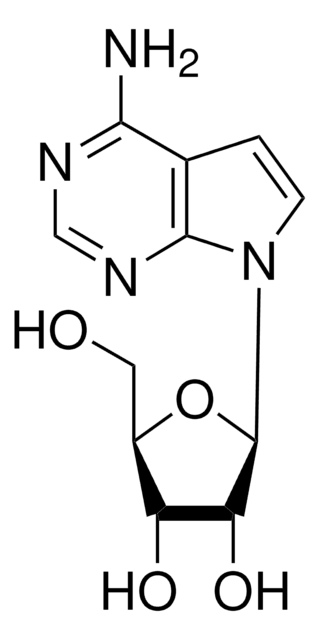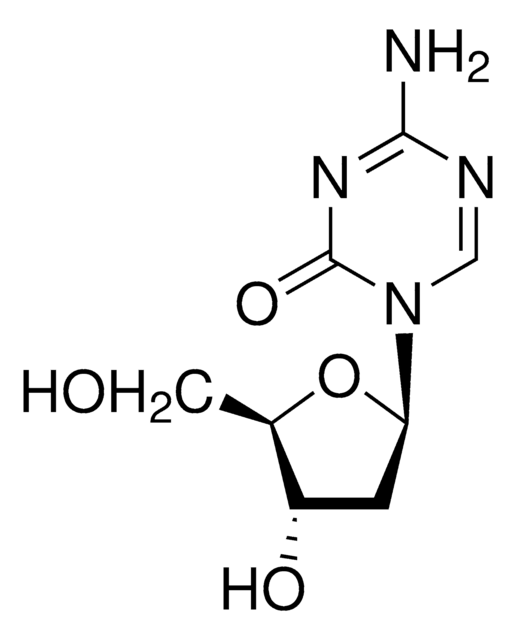D8296
3-Deazaadenosine
Synonyme(s) :
4-Amino-1-(β-D-ribofuranosyl)-1H-imidazo(4,5)-pyridine
About This Item
Produits recommandés
Forme
powder
Niveau de qualité
Température de stockage
2-8°C
Chaîne SMILES
Nc1nccc2n(cnc12)[C@@H]3O[C@H](CO)[C@@H](O)[C@H]3O
InChI
1S/C11H14N4O4/c12-10-7-5(1-2-13-10)15(4-14-7)11-9(18)8(17)6(3-16)19-11/h1-2,4,6,8-9,11,16-18H,3H2,(H2,12,13)/t6-,8-,9-,11-/m1/s1
Clé InChI
DBZQFUNLCALWDY-PNHWDRBUSA-N
Informations sur le gène
rat ... Adora1(29290) , Adora2a(25369) , Adora3(25370)
Application
- to study the effect of m6A modification on suppressor of cytokine signaling 2 (SOCS2) expression in colon cancer cells
- to study its effects on the expression of influenza A virus (IAV) proteins in human lung epithelial cell line
- to evaluate its effects on the replication of SV40 virus in BSC40 cells
Actions biochimiques/physiologiques
Code de la classe de stockage
11 - Combustible Solids
Classe de danger pour l'eau (WGK)
WGK 3
Point d'éclair (°F)
Not applicable
Point d'éclair (°C)
Not applicable
Équipement de protection individuelle
Eyeshields, Gloves, type N95 (US)
Certificats d'analyse (COA)
Recherchez un Certificats d'analyse (COA) en saisissant le numéro de lot du produit. Les numéros de lot figurent sur l'étiquette du produit après les mots "Lot" ou "Batch".
Déjà en possession de ce produit ?
Retrouvez la documentation relative aux produits que vous avez récemment achetés dans la Bibliothèque de documents.
Les clients ont également consulté
Articles
Bioactive small molecules for immune system signaling target identification/validation and antibiotics, antivirals, and antifungals offered.
Notre équipe de scientifiques dispose d'une expérience dans tous les secteurs de la recherche, notamment en sciences de la vie, science des matériaux, synthèse chimique, chromatographie, analyse et dans de nombreux autres domaines..
Contacter notre Service technique










